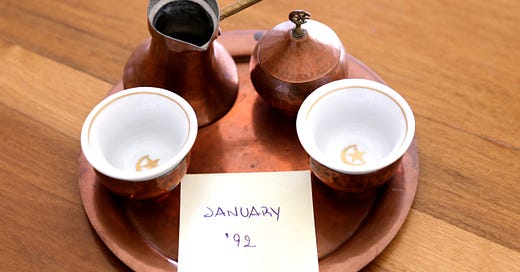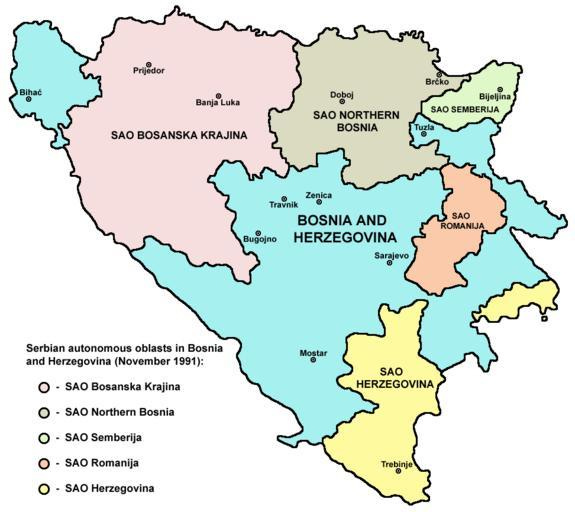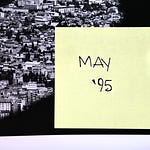It is January 1992.
In former Yugoslavia, 1991 ended with the promise of international recognition of Slovenia and Croatia [you can listen to the latest episode of BarBalkans - Podcast here].
But it ended also with threats to the existence of Bosnia and Herzegovina as a sovereign State, due to both internal tensions and the hegemonic aims of Serbia and Croatia.
The new year starts with the same issues.
No longer just on the table, but on the ground.
The international recognition of Slovenia and Croatia
Recognition of the newly independent Republics by Europe has been an ongoing issue since June 1991, but in recent weeks it has become prominent in the public debate.
Indeed, it is at the heart of European foreign policy in the Western Balkans.
It is no coincidence that on January 13 the Vatican City recognizes the independence of Slovenia and Croatia, in contrast with its own century-old prudence. The Pope decides to send a message to the international community.
Tacit support to Slobodan Milošević’s Serbia is immoral.
Whether the credits must go to the Holy See’s support or not, only two days later the European Community follows suit.
Slovenia has fulfilled all its international obligations. Croatia is only asked to amend its Constitution with more precise protection of minorities.
In Zagreb, people sing Danke Deutschland.
Macedonia is a different matter.
According to the Arbitration Commission’s response to the recognition request submitted in December, Macedonian application also meets all the requirements to be accepted.
But Greece vetoes Macedonian independence.
The government in Athens does not accept what it considers an «irredentist State». Its name (the same as the Aegean region of Greece) and its flag (the eight-pointed star of Alexander the Great) would show it.
Greek resentment grows to the point that Milošević feels entitled to propose to Prime Minister Konstantinos Mitsotakis a partition of Macedonia and the creation of confederal bonds between Serbia and Greece.
Mitsotakis refuses, but mutual sympathies remain strong.
Relations in the Balkans are on thin ice. It is so thin that it breaks and blood flows.
While the twelve EEC countries are trying to find a peaceful solution, the unthinkable happens in the skies over Varaždin on January 7.
An air-to-air missile fired from a federal MIG hits the AB-205 helicopter carrying the flag of the European mission. The Yugoslav People’s Army (JNA) admits it was «a tragic mistake».
One French and four Italian soldiers die: Jean-Luc Ejchenne, Silvano Natale, Fiorenzo Ramacci, Enzo Venturini and Marco Matta. The latter celebrated his 28th birthday on 7 January, 1992.
Western soldiers fall in Croatia. But no soldier is mobilized in Bosnia and Herzegovina.
On January 8, the UN Security Council approves the deployment of 10 thousand peacekeeping forces between Croatia and Serbia, following the Vance Plan.
However, no one thinks of deploying part of them along the borders of Bosnia, as a preventive measure.
There, where they are most needed.
Bosnia between independence and dissolution
For some months now, the situation in Bosnia has been particularly tense. But it is at the beginning of 1992 that the road to war accelerates.
Following the decisions of the previous months, on January 9, Serbs of Bosnia led by Radovan Karadžić draw up the borders of the Republika Srpska.
It includes six Serb Autonomous Regions (SAOs): SAO Herzegovina, SAO Bosnian Krajina, SAO Romanija, SAO Šemberija, SAO North-Eastern Bosnia and SAO Ozren-Posavina.
«A united Bosnia and Herzegovina no longer exists».
This is the scornful statement made by the new President of Republika Srpska.
Meanwhile, in the dark, Croats of Bosnia are also making their plans to get ready to reunite with the “motherland” in case of conflict.
The way they do it accelerates even more the road to war in Bosnia.
At the end of January, the President of Croatia, Franjo Tuđman, decides to replace the head of the Croatian Democratic Union of Bosnia (HDZ).
Arms dealer and extremist Mate Boban takes the place of moderate Stjepan Kljuć, who proposed a cooperation with Bosniaks.
In all this situation, Bosniaks (Bosnian Muslims) led by the President of Bosnia, Alija Izetbegović, get the short end of the stick.
Izetbegović still believes in a Republic where all citizens enjoy the same rights, regardless of their religious faith. His detractors - Karadžić above all - accuse him of aiming to create «an Islamic State in the heart of the Balkans».
Paradoxically, the fatal blow comes from the Western world.
Not only his repeated requests (as early as July 1991) for a contingent of UN blue helmets in Bosnia has fallen on deaf ears. In mid-January, the European Community takes a decision that lights the fuse.
The European leaders ask Sarajevo to hold a referendum on independence, in order to accept the request for international recognition of the Republic of Bosnia and Herzegovina. At least 50 per cent of citizens entitled to vote must participate.
The two-thirds majority of the votes validly cast is required for the approval of independence.
Basically, Bosniaks do not want the dissolution of Yugoslavia, but only more autonomy. Moreover, it was the major Republics that wanted the dissolution.
Last but not least, Belgrade rejects «any weakening of the Federation». This is how the proposal for a confederation between Bosnia, Serbia and Macedonia is seen.
It is in this atmosphere that the referendum for the independence of Bosnia is held.
On January 25, the Parliament of Bosnia calls the referendum on February 29 and March 1.
Serbs of Bosnia react with a violent press campaign against Bosnian Muslims and the most extremists try to blow up the Ferhadija Mosque, a 16th-century monument in Banja Luka.
Tensions are no longer reconcilable, and politician Ejup Ganić’s omen is now a reality:
«This is still Bosnia. Three different opinions on the same thing, that you cannot agree with and yet you are forced to listen to, while sipping your coffee. The good Bosnian coffee. This hot, black drink - together with political maneuvering - ensures the salvation of this Republic and prevent rivers of blood. When it will no longer be possible to have a coffee together... I don't even want to think about it».
The time for coffee in Bosnia is over. The time for weapons is almost come.
Following the Ram Plan for the creation of Greater Serbia, the bulk of the JNA troops - disengaged from Croatian territory since January 2 - move to Bosnia and Herzegovina.
Since the beginning of Yugoslavia’s history, Bosnia has been considered the last defensive stronghold in the case of a foreign invasion. Ironically, it is here that the scene of an atrocious civil war is looming.
The federal forces have deployed six army corps (about 100 thousand soldiers), a thousand armored vehicles, 800 tanks, more than 4 thousand mortars and artillery pieces, 100 warplanes and 50 helicopters on Bosnian territory.
There is an army in Bosnia, which controls the most strategic points: communication routes, infrastructure and the outskirts of cities.
With 16 thousand federal soldiers and 700 cannons, Sarajevo is the most heavily militarized city in Europe.
The sense of security and the good cooperation with the federal authorities shown by Bosniaks - who have already handed over all the weapons of the Territorial Defense in November - risk being fatal.
If you liked this article, you can spread this parallel journey and the free weekly newsletter:
If you know someone who can be interested in this newsletter, why not give them a gift subscription?
Here you can find the summary of 1991 by BarBalkans - Podcast.




















Share this post